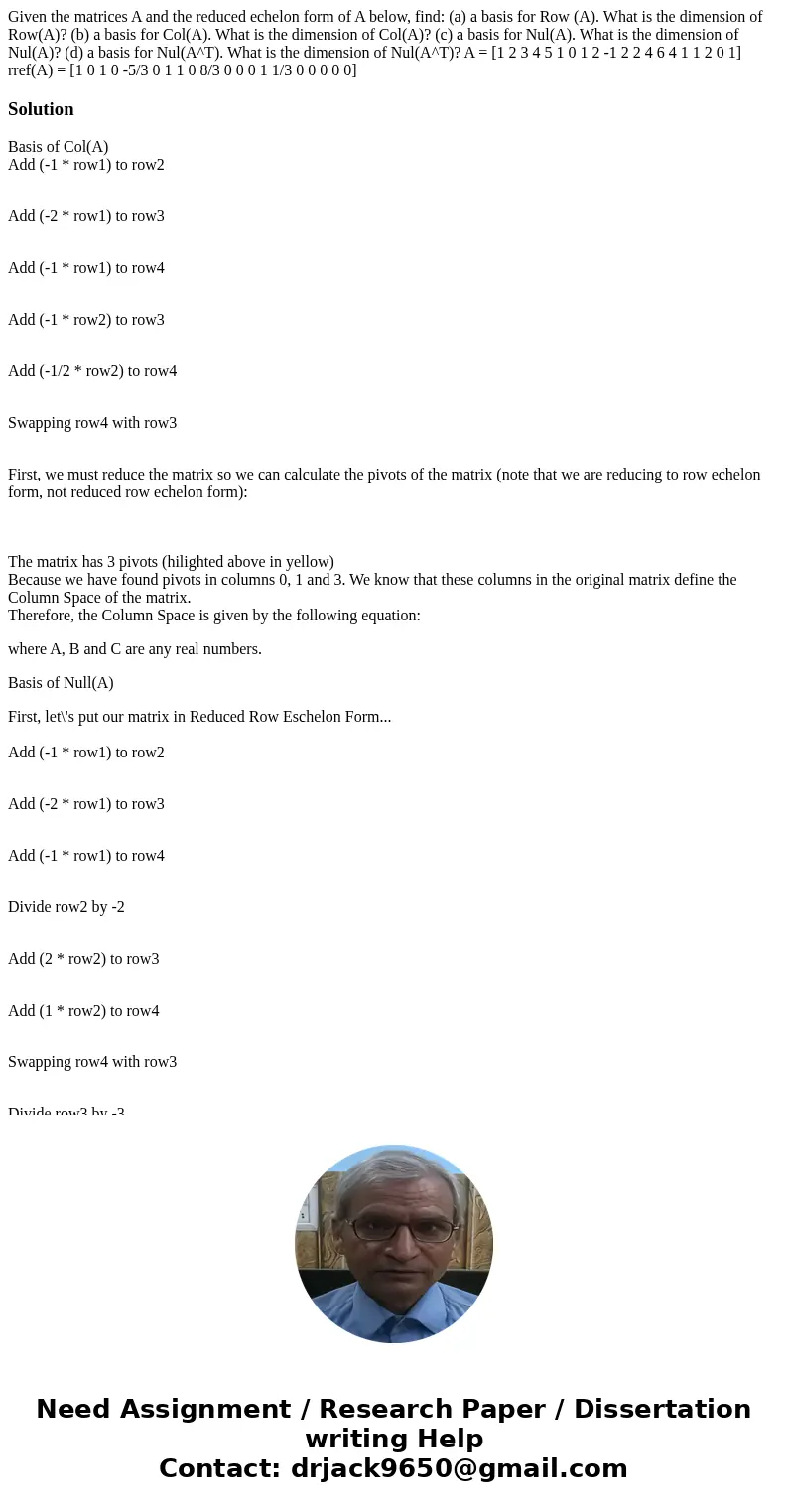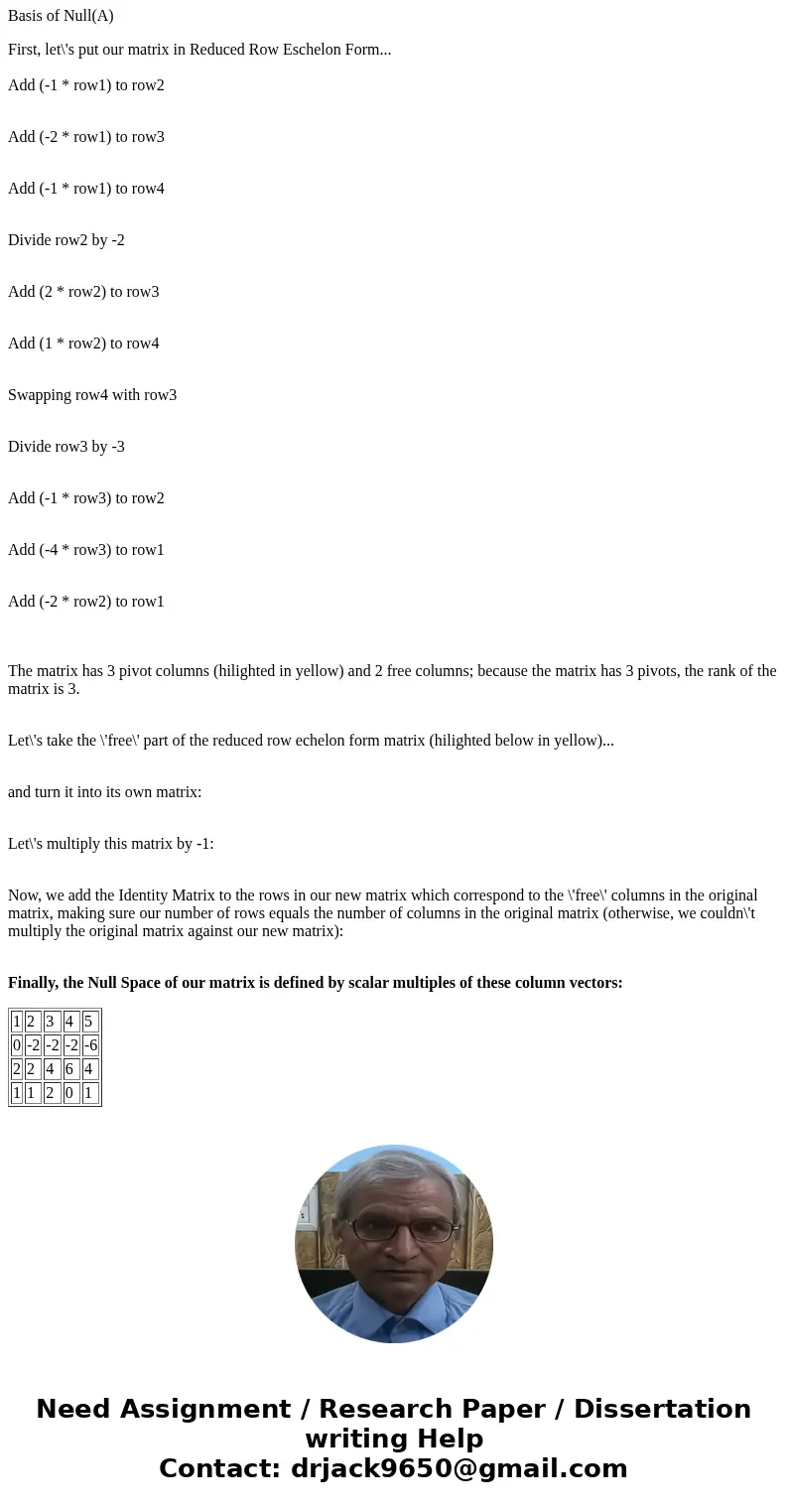Given the matrices A and the reduced echelon form of A below
Solution
Basis of Col(A)
Add (-1 * row1) to row2
Add (-2 * row1) to row3
Add (-1 * row1) to row4
Add (-1 * row2) to row3
Add (-1/2 * row2) to row4
Swapping row4 with row3
First, we must reduce the matrix so we can calculate the pivots of the matrix (note that we are reducing to row echelon form, not reduced row echelon form):
The matrix has 3 pivots (hilighted above in yellow)
Because we have found pivots in columns 0, 1 and 3. We know that these columns in the original matrix define the Column Space of the matrix.
Therefore, the Column Space is given by the following equation:
where A, B and C are any real numbers.
Basis of Null(A)
First, let\'s put our matrix in Reduced Row Eschelon Form...
Add (-1 * row1) to row2
Add (-2 * row1) to row3
Add (-1 * row1) to row4
Divide row2 by -2
Add (2 * row2) to row3
Add (1 * row2) to row4
Swapping row4 with row3
Divide row3 by -3
Add (-1 * row3) to row2
Add (-4 * row3) to row1
Add (-2 * row2) to row1
The matrix has 3 pivot columns (hilighted in yellow) and 2 free columns; because the matrix has 3 pivots, the rank of the matrix is 3.
Let\'s take the \'free\' part of the reduced row echelon form matrix (hilighted below in yellow)...
and turn it into its own matrix:
Let\'s multiply this matrix by -1:
Now, we add the Identity Matrix to the rows in our new matrix which correspond to the \'free\' columns in the original matrix, making sure our number of rows equals the number of columns in the original matrix (otherwise, we couldn\'t multiply the original matrix against our new matrix):
Finally, the Null Space of our matrix is defined by scalar multiples of these column vectors:
| 1 | 2 | 3 | 4 | 5 |
| 0 | -2 | -2 | -2 | -6 |
| 2 | 2 | 4 | 6 | 4 |
| 1 | 1 | 2 | 0 | 1 |


 Homework Sourse
Homework Sourse